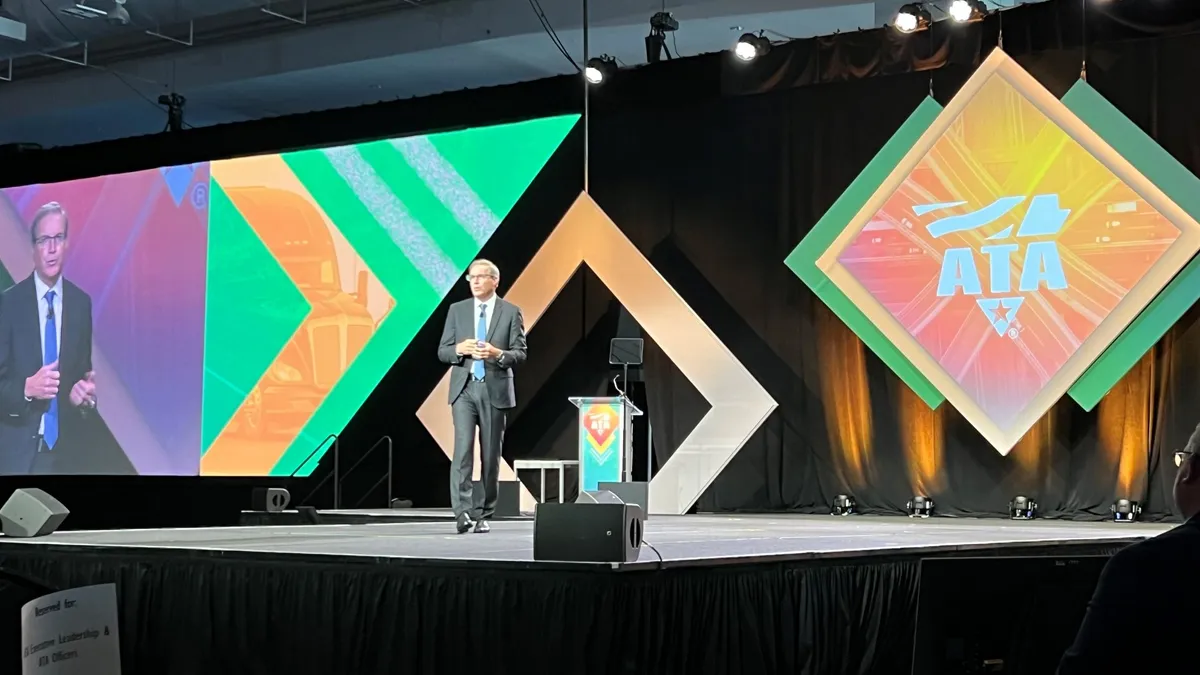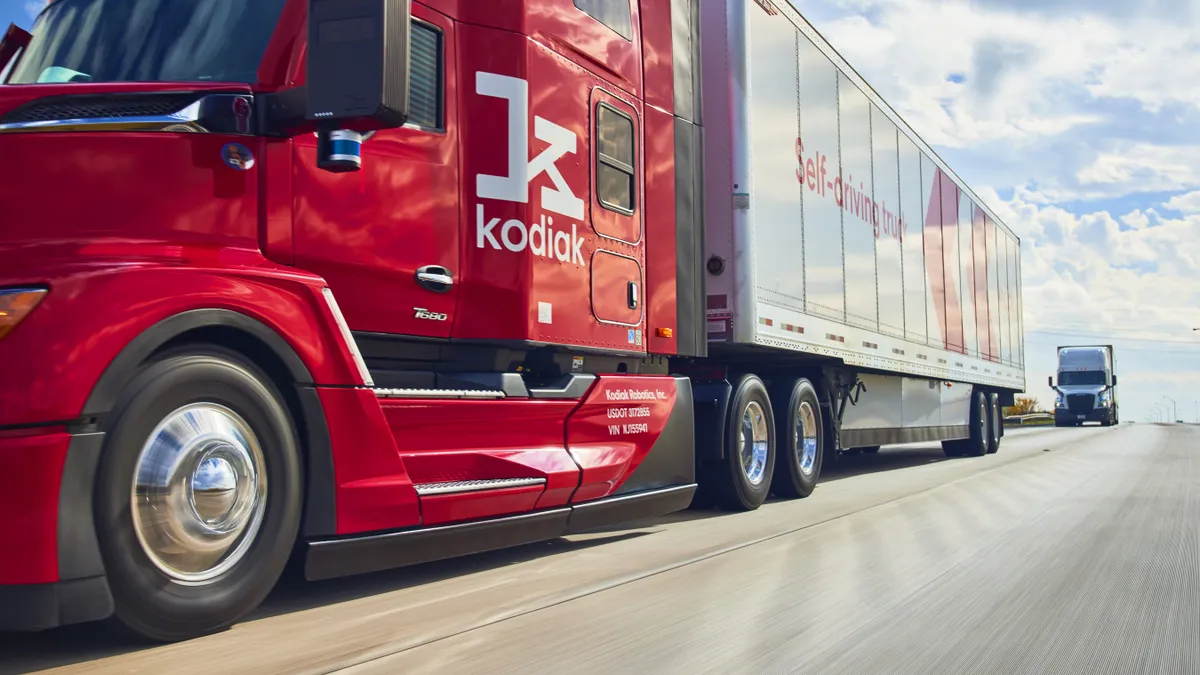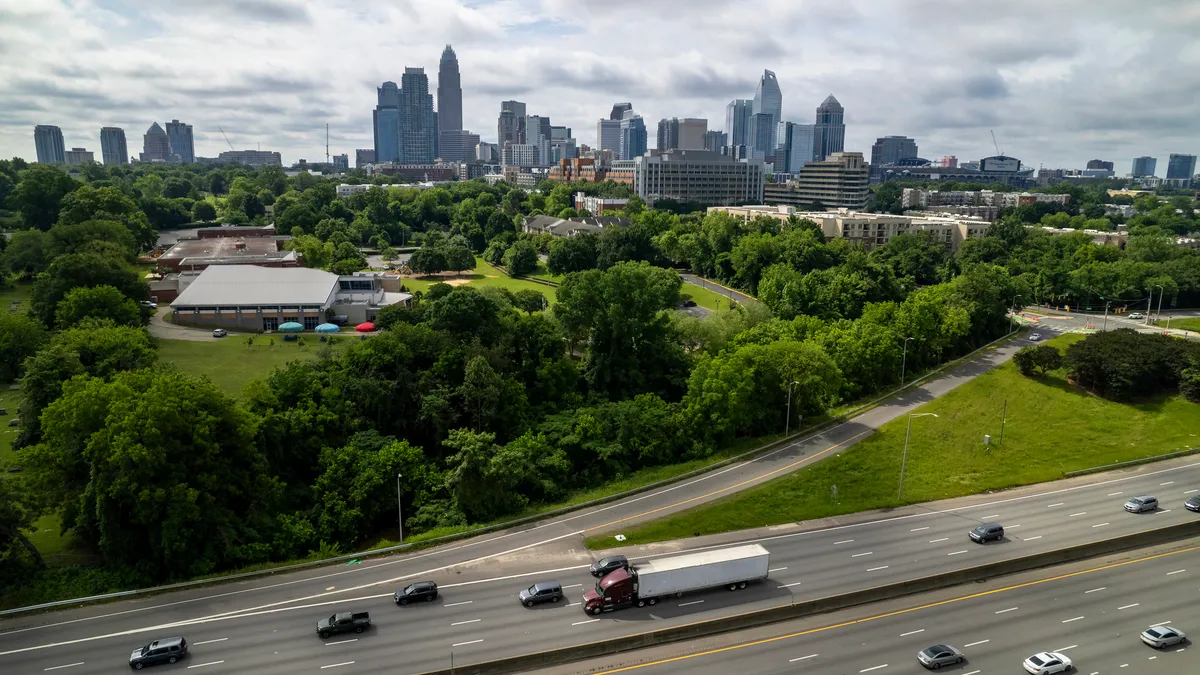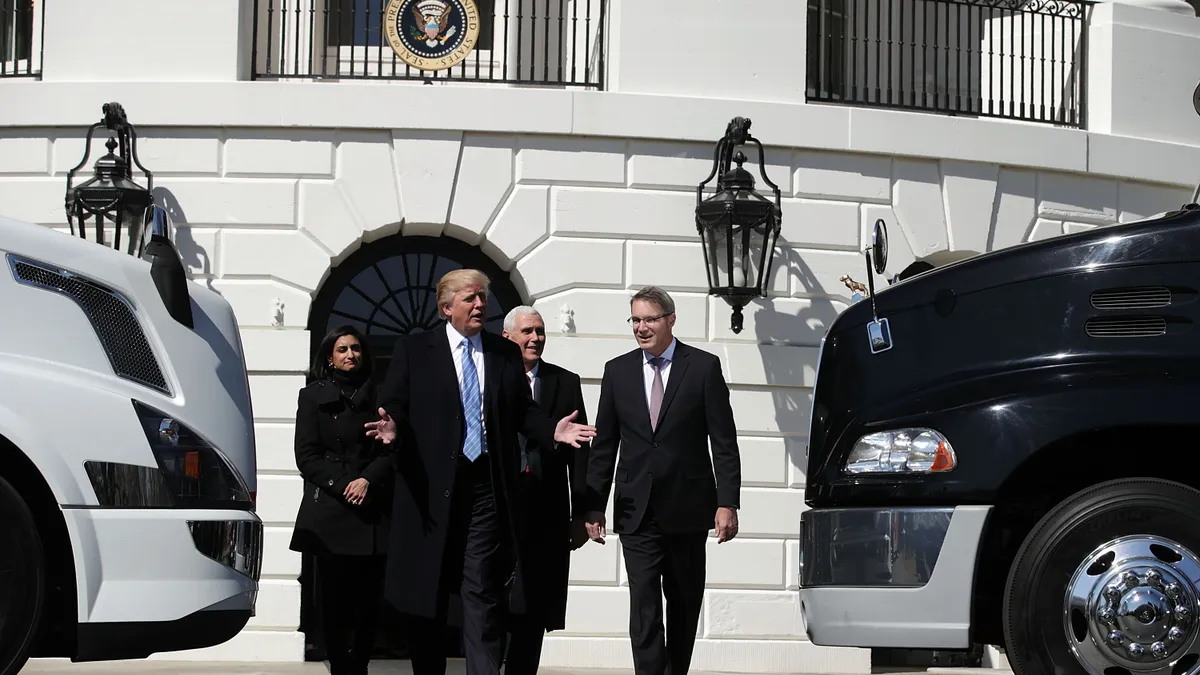With social distancing measures required, fleets needed to reconsider how to protect drivers. One way to do that is through electronic documents instead of paper ones.
Logbooks, proof of delivery, receiving paperwork, bills of lading and payment documents either already had gone digital or had the potential to do so. Paper logbooks went digital in the U.S. in December 2017, when the FMCSA mandated all drivers use electronic logging devices (ELD). In Canada, drivers must be ELD compliant by June 12, 2021.
For the rest of the paperwork mentioned, some fleets already used digital versions before the pandemic hit — some were working on the option, while others stayed with the paper forms.
Brian Fielkow, CEO of Jetco Delivery in Houston, told Transport Dive in an interview, "We have been moving to digital for some time now. All our invoicing is electronic, and proof of delivery goes to the client via email immediately after the load delivers."
Drivers have carried paperless logbooks since 2008 at Jetco Delivery, he said.
"The pandemic exposed a pinch point: signing the proof of delivery and bill of lading."

Brian Fielkow
CEO, Jetco Delivery
Carriers, such as Speedy Transport in Brampton, Ontario, already use ELDs because some of its drivers cross the border into the U.S., said Michael Sbrocchi, VP of sales and customer care, in an interview with Transport Dive.
Jumping on the technology bandwagon before the coronavirus pandemic hit helped Speedy Transport prepare for the need to maintain distance.
Staying six feet away
"The pandemic exposed a pinch point: signing the proof of delivery (POD) and bill of lading (BOL)," Fielkow said. "Normally signed by the shipper and the driver, keeping a social distance between the two put a new spin on how that's accomplished."
Although the client receives the POD in an email, the signing takes place prior to that and in-person, he said. An e-POD doesn't address the social distancing issue that has arisen because of the pandemic. Shipping/receiving personnel and the driver still have to interact.
"We made lightning fast changes as the result of COVID-19," Fielkow said.
Jetco Delivery is currently developing a completely electronic BOL that it plans to roll out in a few months, he said. Inspired by the pandemic, which created an iron-clad case for e-BOLs, he said his team thinks the time is right.

In the meantime, shippers have been creative about helping drivers retain their distance, he said. Some execute the BOL by email while others have a station where the driver signs the BOL and returns to his truck while the shipper signs it.
Sbrocchi said he's seen changes in how the paperwork is handled as well.
Drivers no longer hand over the handheld device for a digital signature. Depending on the customer, documents can be left for someone to sign, the driver backs away six feet, or the document is signed and then retrieved when the shipper has reached a safe distance, he said. This has led to a slight delay, but nothing major, said Sbrocchi.
Prospects equal for all fleets
Each size, big or small, has its advantages. Fielkow said large carriers may have a running start because of their legacy investments in technology, yet smaller carriers can be nimbler because they have fewer restraints.
Some technology has become more affordable. For example, Fielkow said, when Jetco installed ELDs in 2008, they cost more than $1,500 per unit, but now they can be purchased for 25% of that.
"The supply chain has had the ability to go 100% paperless for a long time."

Brian Fielkow
CEO, Jetco Delivery
Small fleets don't need to make big investments, but they must think creatively and decide how to innovate, Fielkow said. "I regularly remind my team, 'small stature is a virtue; small thinking is the kiss of death.'"
He expects to see small carriers develop and implement entrepreneurial ideas, Fielkow said.
As a privately held company, sometimes Speedy Transport can pivot faster than publicly held companies, according to Sbrocchi. "Whether the company is large or small, there must be a desire to change," he said. Carriers who understand the workflow and know what they can optimize and do to provide their best service for their customer base will succeed, he said.
Embrace the digital future
Besides the immediate hygiene issue, digital paperwork saves time and creates efficiency, and clients like it, said Fielkow. In the old school they had to wait for the driver to turn in the paperwork, he said, and that could take up to a week or more. Now they get the paperwork as soon as possible.
"Companies that have been slow to adopt technology certainly will have time to catch up, however those who are unwilling to change will be left behind," he said.
Sbrocchi said Speedy Transport has an IT department and proprietary systems, and it's always looking for ways to adjust those. The fleet focuses on enhancing services and serving the customer base better.
"The supply chain has had the ability to go 100% paperless for a long time," said Fielkow. "The pandemic and the need to be distanced will drive this change home especially with BOLs and PODs."




















